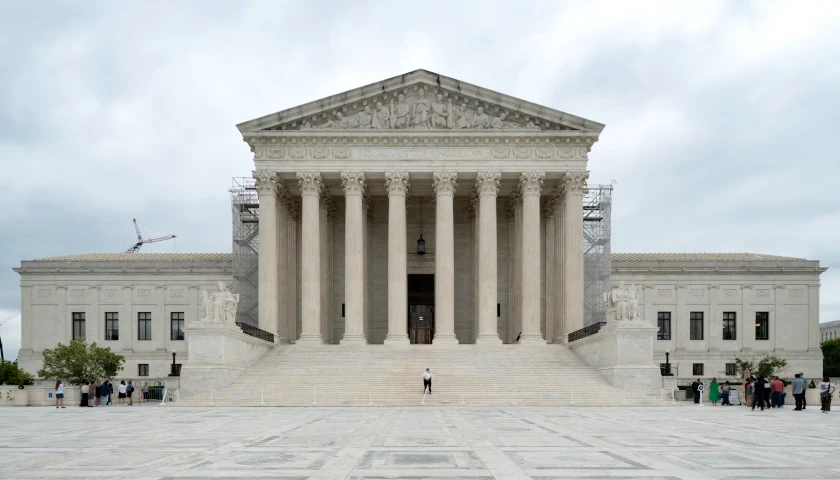by Barry Brownstein
Scurvy, we all know, is a disease caused by a vitamin C deficiency. It took almost 200 years from the time a “lemon juice” cure for scurvy was discovered until it was promoted by the British government. Some think the mental biases that caused the needless deaths of millions have been eliminated in more “enlightened” modern times. They are wrong.
In his book, Bad Medicine, history professor David Wootton explains that scurvy “became a major problem only with the beginning of transoceanic voyages.” On those voyages, fresh fruits and vegetables were lacking for at least ten weeks.
On long voyages, the mortality rate from scurvy was 50 percent. Wootton writes, “One estimate is that two million sailors died of this dreadful disease between Columbus’s discovery of America and the replacement of sailing ships by steamships in the mid-nineteenth century.”
Wootton accounts that in 1740 George Anderson commanded a fleet of six ships and 2,000 men and lost 1,800 men to scurvy. During the French and Indian War (1754-1763), approximately 133,000 of 184,000 sailors in the British fleet died from scurvy. Many of the dead sailors had been “press-ganged into service.”
Yet, most of these deaths were avoidable. By 1601 merchant Sir James Lancaster had already solved the scurvy problem by stocking his ship with lemon juice on his voyage to the East Indies. Wootton reports the practice of stocking lemon juice “became standard on ships of both the Dutch and English East India companies in the early seventeenth century.”
Unfortunately, the lemon juice cure, Wootton writes, “made no sense to doctors with a University education, who were convinced that this disease, like every other, must be caused by bad air or an imbalance of the humours.” Pressured by doctors, ship captains refused to stock lemons.
The British Admiralty “formally asked the College of Physicians for advice on how to combat scurvy.” In 1740, 139 years after the lemon juice cure was known, the response of the College of Physicians was to advocate the use of vinegar and Ward’s Drop and Pill. The pill consisted of poisonous ingredients, including antimony, cobalt, and arsenic, thought to purge illness from the body.
Wootton points out that history incorrectly credits a surgeon, James Lind, with discovering the cure for scurvy. Yet, Lind’s “discovery” occurred 150 years after knowledge of the efficacy of lemon juice was known to the Portuguese, the Spanish, and the first American colonists.
Initially, Lind recognized the lemon juice cure but didn’t understand that scurvy was a nutritional disease. He stuck with a humours theory and believed skin pores clogged by damp air caused scurvy. Lind thought lemon juice unblocked clogged pores. Decades after his first success in 1747, Lind himself lost faith in his remedy and again resorted to bloodletting for scurvy patients. It took another 50 years for lemon juice to be generally adopted by the English Navy.
Voices of those who knew the lemon juice cure were rejected. In 1786, a merchant sea captain wrote to the British Admiralty, informing them that lemon juice cured scurvy. The captain was told that trials have been made of the use of lemons in the treatment of scurvy and that surgeons “all agree” that “lemons and oranges were of no service either in the prevention or cure” of scurvy.
The Admiralty issued this “official” advice 185 years after James Lancaster effectively used lemon juice against scurvy. Notice that merchants were more open-minded in their willingness to try new treatments to save lives. Without the power to press gang, protecting crew members and saving lives was paramount. Notably, Captain James Cook, commanding the Endeavour during his 1769 voyage to New Zealand and Australia, bucked the Admiralty by serving sauerkraut and fresh vegetables when he made landfalls. Cook didn’t lose a single crew member to scurvy during his almost three-year voyage. Yet, in 1773 Lind was still insisting diet was not the cause or cure of scurvy.
Wootton is clear; doctors were culpable: “When good arguments are beaten from the field by bad ones, those who do the driving must bear the responsibility.” “Bad knowledge drove out good,” Wootton argues. The advice of doctors was used as a shield by an inflexible government determined not to yield to the evidence.
Gresham’s Law
Is Wootton correct, did bad knowledge about scurvy drive out good knowledge?
Gresham’s Law explains why bad money drives out good money. This law is frequently misunderstood.
Gresham’s Law only is operable when the bad money and the good money are both legal tender. For instance, when both silver quarters and non-silver quarters were circulated side-by-side, the public hoarded the more valuable silver quarters, taking the silver quarters out of circulation. Bad money (non-silver quarters) drove out good money (silver quarters), but that was only because shopkeepers were forced to treat both silver and non-silver quarters as having the same value.
Detractors of free markets frequently seek to apply Gresham’s Law to products other than money. Their antipathy to free markets leads them to claim that the market rewards the lowest common denominator.
Yet, a moment’s reflection shows this to be untrue. A men’s shirt from Walmart peacefully competes with ones from Charles Tyrwhitt, and these stock shirts peacefully compete with custom-made shirts costing hundreds of dollars. Consumers decide which products best fit their needs, given their preferences and income.
Wootton is correct; history shows how bad knowledge drove out good knowledge about the prevention and treatment of scurvy. Gresham’s Law can be applied: The British Admiralty sanctioned the College of Physicians to provide a “legal tender” treatment—ineffective vinegar and poisonous pills. The bad treatment crowded out the good treatment (lemons) on government ships. The British Admiralty was responsible for the deaths of hundreds of thousands of sailors by blocking a known effective treatment.
If YouTube, Twitter, and Facebook were around in the 18th Century, would they have censored advocates of lemon juice on the grounds that it undermined “the science” endorsed by the College of Physicians?
Remdesivir
Like the British Admiralty acting on the advice of “expert” physicians, many of our experts and politicians assure the public that for COVID-19 there is no prevention other than lockdowns, social distancing, masks, and soon a vaccine. They claim there is no treatment for COVID-19 other than the astonishingly expensive new drug remdesivir. Remdesivir costs $3,120 a dose and is the only FDA-approved treatment for COVID-19. And yet, remdesivir does nothing to reduce mortality from COVID-19. The United States bought the entire supply of remdesivir at the cost of over $1 billion; great for the politically connected pharmaceutical company Gilead, producing remdesivir. But if remdesivir is the “legal tender” treatment, how does this impact our health?
We have all seen this lousy movie before, but our memories are short. In 2009, during the Swine Flu pandemic, Shannon Brownlee and Jeanne Lenzer asked hard questions about Tamiflu, the “remdesivir” of that time. As with remdesivir, Tamiflu at best reduced the duration of illness without impacting mortality. As with remdesivir, Tamiflu was very expensive and was stockpiled by the government. Brownlee and Lenzer questioned whether “the expensive antiviral drugs that the government has stockpiled” have “power to reduce the number of people who die or are hospitalized?” They report,
“As with [flu] vaccines, the scientific evidence for Tamiflu and Relenza is thin at best. In its general-information section, the CDC’s Web site tells readers that antiviral drugs can “make you feel better faster.” True, but not by much. On average, Tamiflu (which accounts for 85 to 90 percent of the flu antiviral-drug market) cuts the duration of flu symptoms by twenty-four hours in otherwise healthy people. In exchange for a slightly shorter bout of illness, as many as one in five people taking Tamiflu will experience nausea and vomiting. About one in five children will have neuropsychiatric side effects, possibly including anxiety and suicidal behavior.”
In short, antivirals such as Tamiflu “have had their effectiveness overplayed, and harms underplayed.”
Today, politically anointed remdesivir is crowding out the inexpensive 65-year-old generic drug hydroxychloroquine (HCQ). Anecdotal and empirical evidence shows HCQ is safe and effective in treating COVID-19. Bretigne Shaffer has done an outstanding job compiling the known evidence about hydroxychloroquine.
Adnan Munkarah, M.D., is Executive Vice President and Chief Clinical Officer, and Steven Kalkanis, M.D., is Senior Vice President and Chief Academic Officer of the large Henry Ford Health System in Michigan. They report that hydroxychloroquine significantly cut mortality rates for thousands of their Health System’s patients. Yet, as Munkarah and Kalkanis write, “the political climate that has persisted has made any objective discussion about this drug impossible, and we are deeply saddened by this turn of events.”
“Scientific debate,” they write “is a common occurrence with almost every published study. In part, this is what fuels the advancement of knowledge – challenging one another on our assumptions, conclusions and applications to get to a better place for the patients we collectively serve.”
Scientific debate is being stifled. Dr. Peter Gøtzsche is one of the leading advocates of “rigorous methodology and the elimination of bias in assessing the efficacy of treatments.” In July he warned,
“It has become increasingly difficult to publish articles in medical journals that are critical of drugs or the drug industry, or that expose fraud and other wrongdoing committed by doctors. It is also difficult to publish articles documenting that the status quo in a medical specialty is harmful for the patients even though such articles should be warmly welcomed.”
How much has really changed since the British College of Physicians suppressed a real cure for scurvy in favor of Ward’s Drop and Pill?
With hydroxychloroquine, “experts” led by Dr. Fauci are actively suppressing debate. The FDA has revoked its emergency use permission for hydroxychloroquine. Hydroxychloroquine is denied to those inflicted with COVID-19, not on the merits of remdesivir, but due to the coercive force of government.
What Government Is Selling
Connecting the dots is easy. The government is spending over $10 billion on its Operation Warp Speed to produce a vaccine that will be shielded from liability.
A rushed COVID-19 vaccine will not go through full safety trials, yet the FDA will probably issue an Emergency Use Authorization (EUA) to approve a vaccine. To issue an EUA, there must be “no adequate, approved, and available alternative.” In other words, HCQ or another effective treatment is a threat to a vaccine; if hydroxychloroquine is effective, there can be no fast-tracked vaccine.
Recently Bill Gates was questioned about the side effects of a COVID-19 frontrunner vaccine being manufactured by biotech start-up Moderna. Norah O’Donnell asked Gates about the alarming report that 80% “of the participants [in the vaccine trial] experienced a systemic side effect.” Gates responded, “The side effects were not super severe; that is, it didn’t cause permanent health problems.” Given the short-term trial time, Gates doesn’t know if there are permanent health problems. Gates’s “not super severe” standard might be acceptable to some people; many others are ready to say no thanks.
Gates then added, the FDA will do a good job [of not allowing a vaccine with severe side effects] despite the pressure. Fauci, too, said he is not worried about side effects of the Moderna vaccine.
Fauci and Gates rely upon the FDA to guarantee safety. In his book Against Leviathan Robert Higgs writes:
“Rather than supplying the quality assurance that people value, the FDA serves, in a sense, as a central planner in the quality-assurance sector of the medical goods economy. The agency imposes a body of rigid, one-size-fits-all rules, binding on everyone regardless of the actual individual differences of people’s medical conditions, personal preferences and attitudes towards bearing risks…Like other forms of central planning, it cannot solve the problems of information and incentives inherent in its way of dealing with the issues within its jurisdiction.”
Higgs quotes former FDA official Dr. Henry Miller as saying, “The gold standard of FDA regulation is fool’s gold.”
As an economist, I’m concerned that liability shields eliminate the essential role insurance companies play in assessing risk. I take seriously the words of Ruud Dobber, an executive at AstraZeneca, another COVID-19 vaccine manufacturer, who said about the worldwide liability shields his company sought, “We as a company simply cannot take the risk if in … four years the vaccine is showing side effects.” As a consumer, I give more serious consideration to Dobber’s reservations than Gates’s “not super severe” assurance of side effects.
A recent survey by KEKSTCNC, a global strategic communications firm, found that in the United States, Americans believe the prevalence and morbidity of COVID-19 are far greater than actual counts. Americans believe an astonishing 9% of Americans have died from COVID-19. The public perception is exaggerated 225x.
If many people you know are in a constant state of fear for themselves and their children, incessantly monitoring themselves for symptoms, now you know why. To the frightened, Dr. Fauci is a hero who they desperately hope will relieve their existential fears of death, an existential dread that many have projected onto COVID-19. They resent when their hero is fact-checked.
Refuse Fauci’s favored vaccine solution, and some advocate the government should force you to take the vaccine or jail you. Such draconian solutions take root when the government feeds existential fears.
There are likely “lemon juice” solutions to COVID-19, and perhaps hydroxychloroquine is one. But a government that suppresses debate and wants to funnel billions towards politically connected firms will discredit all challengers to their favored solutions. In the name of what they define as “the science,” the discovery process of real science is suppressed. Science suppressors are part of an illiberal movement whose members, in the words of Jeffrey Tucker, are “enemies of freedom and human rights.” They threaten the health of billions.
– – –
Barry Brownstein is professor emeritus of economics and leadership at the University of Baltimore. He is senior contributor at Intellectual Takeout and the author of The Inner-Work of Leadership.





